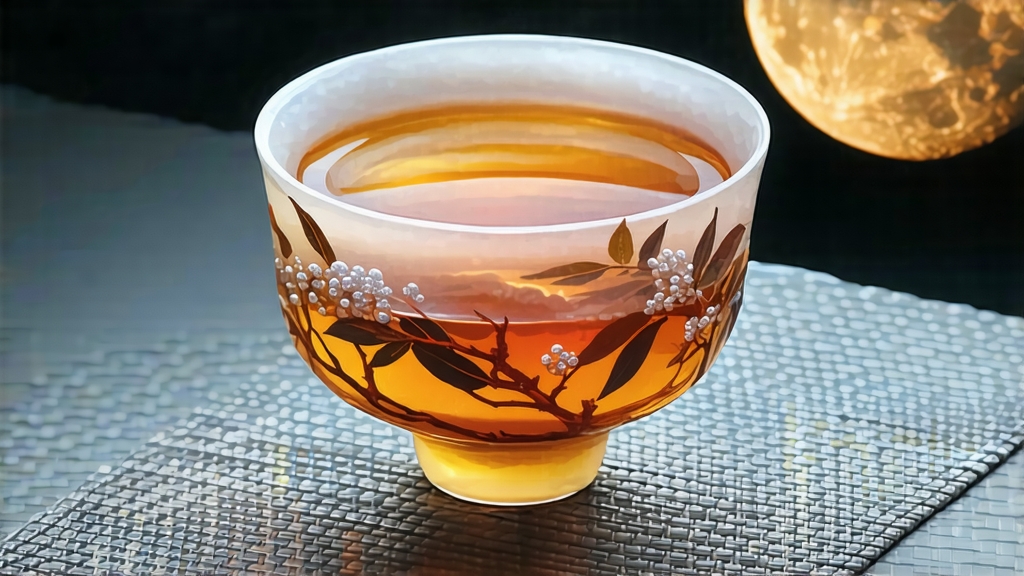
Tucked away in the cloud-veiled highlands of southern Yunnan, where the Mekong carves silver loops through subtropical forests, a tea that never sees the sun has been quietly seducing palates for almost four decades. International drinkers may speak reverently of Fujian’s Silver Needle or White Peony, yet inside China the whispered name that now quickens a collector’s pulse is Yue Guang Bai—literally “White Moonlight.” Part myth, part meticulous craft, this leaf is China’s only mainstream white tea whose processing is entirely nocturnal. To understand it is to step into a world where moonlight replaces conveyor belts, where tea makers become astronomers of humidity, and where every cup tastes like the high plateau night itself—cool, spacious, faintly luminous.
Historical haze
Unlike the dynastic pedigrees of Fujian white teas, Yue Guang Bai’s origin is almost shockingly recent. Local legend traces its birth to 1983, when a Jinggu County producer, frustrated by a sudden power outage that silenced his fans, spread fresh leaves on bamboo trays under the full moon rather than risk spoilage. By dawn the leaves had lost only 30 % of their moisture but had absorbed an ethereal floral note absent from sun-withered batches. The experiment was repeated, refined, and by the early 2000s moon-withered tea had become Jinggu’s calling card. Because Yunnan’s large-leaf Assamica cultivars naturally contain more polyphenols and long-chain sugars than Fujian’s small-leaf varieties, the night oxidation yielded a deeper, honeyed liquor without sacrificing white tea’s trademark delicacy. Thus a serendipitous blackout birthed a new genre.
From forest to factory: the leaf that sleeps by day
Yue Guang Bai is plucked from ancient Assamica trees scattered between 1 600 m and 2 000 m in Jinggu, Lincang and parts of Xishuangbanna. The harvest window is mercilessly short: only the first two weeks of early spring when buds still wear their protective down and the night temperature hovers between 12 °C and 16 °C. Pickers work from dawn till late afternoon, collecting one bud plus the immediate half-open leaf, a plucking standard stricter than Yunnan’s sun-dried pu-erh but looser than Fujian’s Silver Needle. Baskets are lined with banana leaves to prevent compression heating; the goal is to keep the picked material as cool as possible until nightfall.
When the sun dips behind Wuliang Mountain, the real choreography begins. Leaves are spread on screened racks inside open-walled barns built on ridgelines where cross-valley breezes provide constant airflow. Under moonlight the withering lasts eight to ten hours, guided by hand-turning every forty minutes. Because there is no infrared radiation from the sun, enzymatic oxidation proceeds more slowly, preserving higher levels of L-theanine and creating a signature “sweet hay & apricot” aroma. Around 3 a.m., when relative humidity peaks, masters test leaves by the pinch-and-twist method: if a stem snaps with a faint violin-string note, the wither is complete. The tea is then flash-dried for ninety seconds at 42 °C—just enough to halt oxidation while locking in the moonlight fragrance. No rolling, no baking, no charcoal finish; the leaf remains as fluffy as a barn owl’s feather.
Grades and guises
Although Yue Guang Bai is a single name, the market recognises three unofficial grades. “Needle Moon” consists almost entirely of silver buds, pale on one side and charcoal grey on the reverse because the moon only illuminates half the leaf—an optical quirk cherished by collectors. “One Leaf Moon” blends bud with the first half-mature leaf, yielding a rounder, peach-skin liquor. Finally “Ancient Moon” is harvested from trees over 300 years old; the leaves are broader, the taste evokes wildflower honey with a trace of camphor from neighbouring camphor trees. All grades share a charcoal-grey dorsal side and a silvery moon-kissed face, a visual poem that makes identification instant even for novices.
Terroir in a cup
Yunnan’s red lateritic soil, rich in iron and decomposed granite, gifts the leaf a minerality rare in